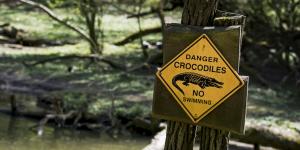The Most Dangerous Snakes in India


The dark, dense forests of India are the ideal habitat for venomous animals. These forests offer abundant prey for giant snakes, scorpions and poisonous spiders.
With 270 species of snakes, 60 of whom are highly venomous, there is no dearth of lethal animals in India, including the king cobra, the deadliest snake in the world. Among them are the so-called big four snakes of India; the Indian or spectacled cobra, the common krait, the Russell's viper and the saw-scaled viper. Nearly 50,000 people die each year due to snake bites in India.
The tropical country is also the home of the deadly black and red scorpions. Spiders belonging to the tarantula family are also found in the Western and Eastern ghats of India, where there is dense foliage. Want to learn more? Stay with us at AnimalWised and discover the 10 most venomous animals in India.
- The Indian Cobra
- The King Cobra
- The Krait
- The Russell's Viper
- The Saw-Scaled Viper
- The Pit Vipers
- The Bamboo Pit Viper
- The Banded Sea Krait
- Other dangerous animals: The Indian Red Scorpion
- Other dangerous animals: The Indian Ornamental Tree Spider
The Indian Cobra
The Indian or spectacled cobra (Naja naja), also called the Nag, is a species of highly poisonous snake found in India. It feeds on rodents, lizards, and frogs. There are many species of cobras in India, but this particular species has caused the highest number of snake bites in the country.
The Indian cobra is also known as the Holy Snake in India, where it is worshipped as a symbol of Lord Shiva. During the Naga Panchami festival, a cobra is an object of worship.
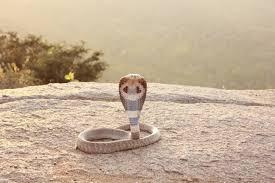
The King Cobra
The king cobra (Ophiophagus hannah) is the longest venomous snake in the world, as it can grow up to 5.5 m in length and can raise its head 2 m off the ground. It is a highly carnivorous snake, and it even eats other snakes. Its favorite prey includes the non-venomous rat snake, other cobras, kraits and small pythons.
The king cobra has caused various fatalities in India through its venomous sting, and it is known all over the world for being one of the most dangerous snakes in the world. Cobras do not need to bite to cause hurt, as they can eject venom through their fangs across a distance of 2 m blinding their prey and causing severe damage to the eyes if not washed out quickly.
Its habitat includes the thick jungles, cool swamps, bamboo clusters and rainforests of India. The home of the king cobra is the Indian state of Kerala. This large, powerful snake can be tan, olive green or black, with pale yellow cross bands. There is an anti-serum for evading bites from the king cobra, but it is still one of the most venomous animals in India can kill a person with a single bite.
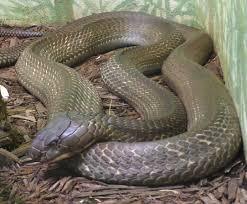
The Krait
Krait venom contains a lot of neurotoxins that can lead to muscular paralysis, and its bite is life-threatening. There are a total of 12 species and 5 sub-species of krait snakes in the world; the common or Indian krait (Bungarus caerulus) is found in the jungle and villages of the Indian subcontinental region.
One of the largest snakes in the Indian subcontinent is the banded krait (Bungarus fasciatus), recognizable by its black-yellow cross bands and certainly one of the most venomous animals in India. It inhabits the deep jungles.

The Russell's Viper
The Russell's viper (Daboia ruselii) has killed more people than any other snake in India. Found in all areas of the country, this venomous snake makes a sizzling noise before it strikes. It is nocturnal and can be even found inside camping equipment or automobiles, which is what makes it very dangerous. The local name of the Russell's viper is "Daboia" or "Koriwala".
The neurotoxin it releases is a hemotoxin that can damage the central nervous system of any species. Its bite can kill a person, following internal bleeding, massive pain and a hemorrhage in the brain. With an average length of 4 feet, this dark brown or brownish-gray snake feeds on rodents, small birds, and lizards.
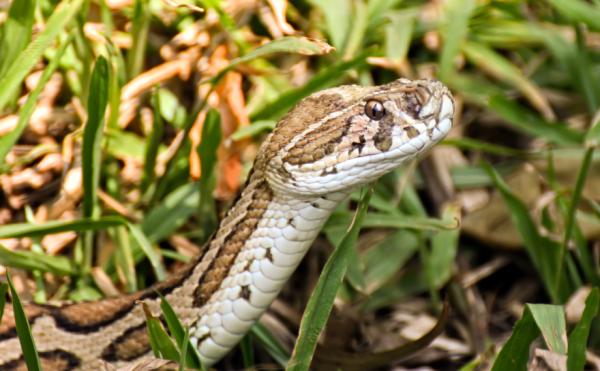
The Saw-Scaled Viper
The saw-scaled viper (Echis carinatus) is recognizable by its larger than average eyes; its head is wider than the neck, and its body is quite stocky.
It is found in sandy areas, rocky habitats, soft soil and scrub lands. It feeds on lizards, frogs, and various types of arthropods such as centipedes, large sized insects, and scorpions. Among the most venomous vipers, the saw-scaled is the smallest member of the big four group, which gives it the popular name of "little Indian viper".
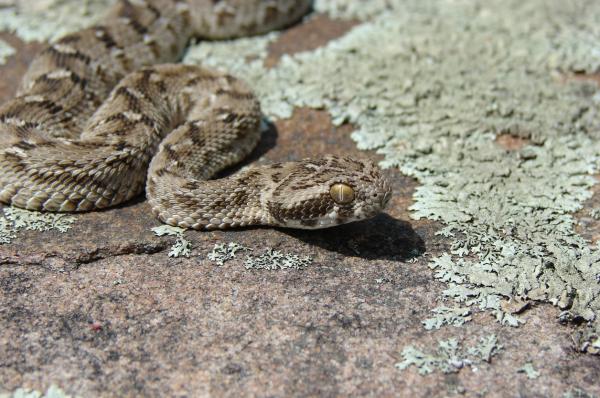
The Pit Vipers
Endemic to southwest India, found on the west coast and the Western Ghats, the Malabar pit or rock viper (Trimeserus malabaricus) is one of the most dangerous snakes in India.
Another pit viper species endemic to India and Sri Lanka is the hump-nosed pit viper (Hypnale hypnale), which is active in the night and hunts in the early morning.
Yet another venomous Indian pit viper is the shore or mangrove pit viper (Trimeresurus purpureomaculatus) found in islands of Andaman Islands and the island of Car Nicobar in the Indian Ocean.
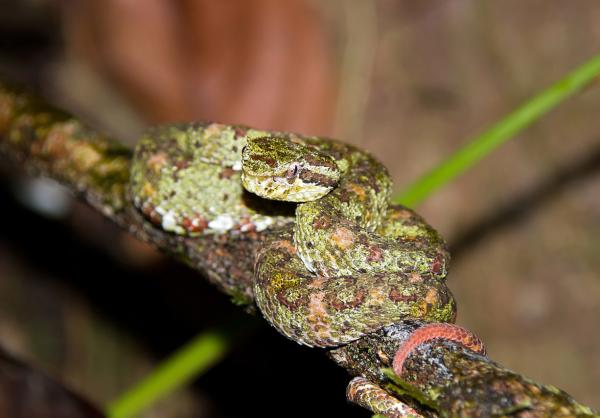
The Bamboo Pit Viper
Yet another particularly venomous pit viper and one of the most dangerous snakes in India is the bamboo or Indian green pit viper (Trimeresurus gramineus), found in the mountainous regions of Western Ghat in southern India.
The bamboo pit viper is not only found in grasslands and jungles but also in urban areas. It is arboreal, and it lives in the vines, bushes, and bamboos of India. This snake also has a heat sensing system apart from a venomous sting. It grows at the length of 2.5 feet.

The Banded Sea Krait
The banded sea krait or yellow-lipped sea krait (Laticauda colubrina), unlike the previous species, is a sea snake. It is one of the most dangerous snakes in India, although it is not usually aggressive.
The banded sea krait inhabits a wide range of the Indian Ocean and the western Pacific Ocean. In India, it is often found in the eastern coast, as it is semiaquatic and moves inland every once in a while. This krait's venom is more potent than that of the land species.
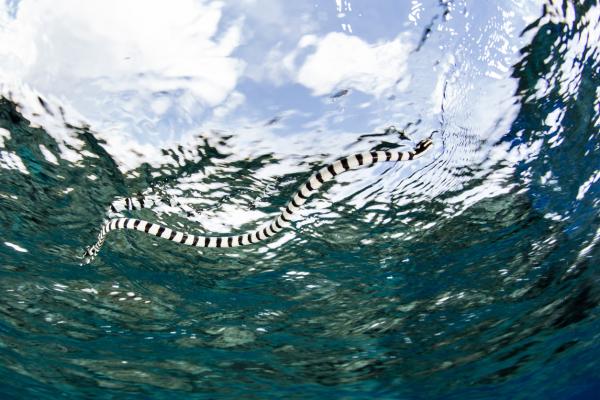
Other dangerous animals: The Indian Red Scorpion
Scorpions are predators that seldom bite unless they are threatened or hurt. They feed on small arthropods and insects. While there are more than 80 scorpion species in India, they aren't all deadly. However, more than 50 people die every year by a scorpion's bite in India.
There are two particularly venomous scorpions in India, the red and the black. The Indian red scorpion (Hottentotta tamulis) is a lethal species. This tiny animal, which reaches only 90 mm long, causes victims to suffer from you can encounter an Indian red scorpion include Nepal, Pakistan, and Sri Lanka. While they are called "red", their color ranges from orange to brown and gray. They also have dark gray spots on the head and lower back.

Other dangerous animals: The Indian Ornamental Tree Spider
While not lethal, the bite of an Indian ornamental tree spider (Poecilotheria regalis) is incredibly painful. There are many venomous spiders in India, including tarantulas and black widows. They usually cause bitten limbs to swell, and they can be deadly to allergic victims.
The Indian ornamental tree spider is over 7 inches long, and it is found in the Western and Eastern ghats of India. This arboreal spider lives in tree holes and feeds on flying insects. The quick action of this spider is enough to catch its prey; it does not even need webs. Venom paralyzes the prey and causes pain and muscle cramping.

These are the most dangerous snakes in India, as well as dangerous scorpions and spiders. These native animals of India can have deadly consequences for their victims. Stay with us and discover the 10 most dangerous animals in India and the 10 most venomous animals in the world. Keep your eyes open!
If you want to read similar articles to The Most Dangerous Snakes in India, we recommend you visit our Facts about the animal kingdom category.



